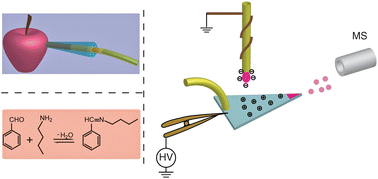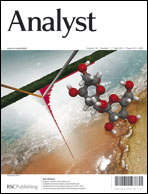Development and applications of paper-based electrospray ionization-mass spectrometry for monitoring of sequentially generated droplets†
Abstract
In this work, sub-microlitre droplets were generated by gravity and electrostatic attraction using a capillary tube. The parameters affecting the sizes and frequency of the droplets were investigated. The volume of droplets could be controlled in the range from 0.7 μL to 2.4 μL and the time interval from 15 s to 60 s with appropriate parameters. Combining the droplets with on-line


 Please wait while we load your content...
Please wait while we load your content...